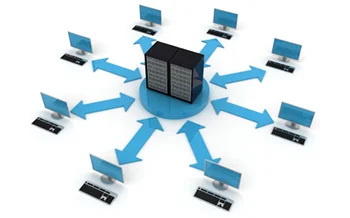Keep Your IT Guy and Outsource IT Services, Too
Everyone in the office loves Eric. Sporting a different ironic t-shirt everyday, Eric is the one we call when technology spits in our face. Whether it’s a slow system, a bug that needs to be squashed, a website issue, or a crash that results in unexpected downtime and data loss, Eric is right there. Not only does he get to the bottom of any issue but he also rights the ship like he’s some sort of miracle-working captain who just happens to have a pretty wickedly funny Peter Griffin from Family Guy impersonation.
But business is growing and Eric is overworked. Eric has certain skills that you’d love to use to develop innovative applications and revenue-generating projects– but he’s too busy running around fixing things that break. Or he’s performing the most mundane and routine tasks day-in-and-day-out just to keep things secure and running smoothly.
You get a sense that Eric’s overburdened and he’s saddled with too many responsibilities. His demeanor has changed from pleasant to moody. He’s listening to angrier metal and punk music and you’re noticing cracks in his work. You fear Eric is being pulled in too many directions and the reliability of your server, network, and applications, as well as the integrity of your data, are all at risk.
Someone who has watched a bit too much of Donald Trump on The Apprentice might think Eric should be fired. We’re not going to fire Eric. But we’re also not going to hire a full-time salaried Robin to his Batman or Cheech to his Chong. We’re going to help Eric by exploiting IT automation and managed services to handle many of the monotonous tasks making Eric hate his job right now.
Let’s help Eric…..
- Focus Primarily on Cost-Cutting and Revenue Increasing Projects: First things first, Eric has to realize that he can’t do everything himself. Where are his skills best used? Whether it’s processes that help drive down costs or ones with the potential to raise revenue, evaluate the projects in the queue and rank them by what impacts the bottom line the most.
Once that’s done, look at the day-to-day processes designed to keep things running securely and efficiently. What can be off-loaded from Eric? Determine which of those tasks can be automated either through the cloud or managed services.
- Take to the Cloud: Some IT people fear the cloud spells the end to their job security. Meanwhile, the cloud can actually help them take on a more prominent contributing role in the company’s success.
The cloud should be seen as another tool that further eliminates the mundane yet necessary daily drudgery from their workday. Those who work WITH the cloud will find that they have more available time to take on more meaningful cost cutting or revenue generating projects.
- Use a Managed Service Provider: Using outsourced managed services not only alleviates much of Eric’s pressure and stress, but also boosts productivity and gives the company a much improved ROI (Return-on-Investment) on their technology investment.
While technology has gotten easier for the end user, it has become more complex on the backend with the advent of virtualization, cloud computing, and advanced infrastructure.
Using an MSP gives Eric access to a trusted advisor, a 24/7 help desk, remote monitoring and management tools, mobile device management tools, and much better disaster recovery and business continuity solutions. All without the overhead that comes with hiring more help for Eric. MSPs offer a consistency to not just your end-user but also your main IT guy who will certainly appreciate the help.
Contact us at Net DirXions, Inc





